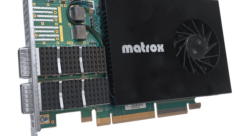
ICIAKeep It Growing
Aug 1, 2004 12:00 PM
ICIA’s study breaks down the AV products and AV services markets.
The worst thing about the present, someone once joked, is the future. Whoever said so might well have been in the AV business. With technologies and markets in constant motion, the future often seems as risky as a casino. How can professional AV dealers plan for next year’s challenges without going overboard or in the wrong direction? Or fall behind by sitting tight too long? When change is rapid, even stability may not be a defense.Important indicators for the future, as well as the first documented profile of the size of present markets, are emerging from a long-awaited report by the International Communications Industries Association (ICIA). The recently released market survey describes for the first time the dimensions of the audiovisual industry and suggests how AV dealers and contractors can sensibly plan ahead.ICIA’s chief news is that the AV market is bigger than most people have believed, generating $18.9 billion a year in product sales and service revenues in North America. The AV industry is also dramatically growing and is projected to continue growing at a rate of 9.6 percent annually during the next five years.The AV Market Definition and Strategy Study (MDSS) was prepared for ICIA’s International Communications Industries Foundation by Acclaro Growth Partners. It shows how AV technology has developed to the point that it enhances virtually all of today’s communication-related activities, whether in a boardroom, a classroom, an office, or a public space.STILL GROWINGTwo key factors are driving the growth: the many new applications for AV products and AV technology’s increasing convergence with information technology (IT), which is accelerating the spread of technologies that support such newer applications as streaming media, Webcasting, wireless technology, and AV-related software programs.The survey describes an AV market with annual product sales of $11.5 billion and revenue from services of $7.4 billion. It shows the top product groups to be display systems, which are responsible for 40 percent of sales; AV systems for 22 percent; peripherals, including furniture and lighting, for 14 percent of sales; control systems for 10 percent; and signal management processing products for 8 percent.Driving new demand in the market are displays, control systems, and projectors, with display systems expected to experience a growth rate of 12.1 percent owing to innovations in flat-screen technologies.However, margins are being squeezed, and professional AV dealers, the report concludes, are facing a “moderately high” competitive threat. Although today’s dealers offer services covering a broader spectrum of activities — ranging from distribution, resale, and design to installation and integration — one result is that the more complicated market structure is challenging traditional dealers.PLANNING FOR CHANGEICIA’s report recommends that smaller, independent dealers, which make up the majority of the market, develop unique and defensible niches in the areas where they’re based. Whether the niche is product, service, or end-user oriented should depend on the nature of local competition.Dealers can develop a strategy for themselves by looking for opportunities to expand and focus their businesses. For example, they can investigate expanding into new markets, such as health care and the performing arts, that are solid and growing or into products like display systems that are experiencing the greatest demand. Display systems generate 40 percent of product revenue in North America. This category includes displays at $1.1 billion; projectors at $2.4 billion; screens and shades at $650 million; and white boards at $390 million. The report splits out suggestions for dealers into market-oriented strategies, product-oriented strategies, and service-oriented strategies. An example of a service-oriented observation is that programming is likely to be a critical dealer service in the next five years.In a similar fashion, dealers can look into the opportunities available from focusing more strongly on large, established markets, like retail or hospitality, or specializing in product groups that apply to a variety of AV markets, such as control systems, projectors and displays, and conferencing systems.The report also recommends that dealers more actively:ICIA’s report is available in two versions. The Commercial Market Definition and Strategy Study — for dealers, integrators, rental/staging companies, and independent consultants — is available for $349 to ICIA members and $499 to nonmembers. The Manufacturer MDSS is available for $999 to ICIA members and $1,499 to nonmembers. They may be purchased on the ICIA Web site at www.infocomm.org/marketintelligence.For more information about ICIA and InfoComm, visit www.infocomm.org.
- promote their expertise, because the growing complexity of projects is likely to make dealer know-how more valuable and capable of supporting higher prices;
- develop and diversify service offerings over the short term. Programming, for example, is likely to be a critically needed service during the next five years, along with traditional services, like systems integration, equipment sales, and systems design;
- embrace AV/IT services and products;
- forge relationships with design consultants or develop design capabilities internally. Independent design consultants are a reliable source of revenue for dealers, with annual revenues up to $100 million, while very large dealers will want to expand their own design capabilities;
- pursue customers in the education, training, business, corporate, and government end-user markets. Education and training are especially attractive areas because over 90 percent of the study’s participants say they manage more than 15 AV spaces, significantly above the number of AV spaces managed by those in business, corporate, and government markets;
- court IT departments when necessary. IT departments tend to be significantly involved departments in purchases of AV products and services, even though end-users downplay their role; and
- investigate opportunities in home theater, especially small dealers, who may have more flexibility to incorporate it profitably into their product and service offerings.










